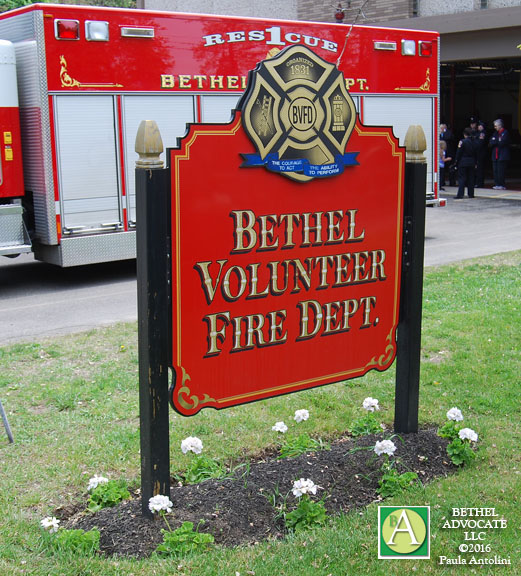
Report by Paula Antolini
August 20, 2018 1:23PM EDT
‘Photo-Voltaic’ Solar Panel Fires and Run Totals for Bethel Fire and EMS for the Month of July
Fire
There were a total of 31 calls for the Fire Department for the month of July.
Structure Fire – 1
Automatic Alarms – 6
Mutual Aid – 2
Kitchen/Stove/ food on stove – 3
Motor Vehicle Accident – 4
Appliance – 1
EMS Assist – 1
Carbon Monoxide – 2
Natural Gas issues – 2
Unauthorized Burn – 6
Public Assist – 1
Wires down – 2
Bethel Fire was requested 2 times out of town for Mutual Aid
EMS
There were a total of 150 EMS calls for this past month.
*****
Car 3’s Corner
I wanted to stick to a fire specific topic this month, and the topic actually was discussed on a recent drill we had attended. We have received many questions about regarding this on our departments Facebook page, so it was an easy one to choose.
This month I will discuss firefighting considerations with Solar panels. There was a time in the not too distant past that solar panels were a fringe thing that people used to heat water, charge batteries for remote cabin use, or for people “off the grid.” This is no longer the case. Combined with peoples concern for the environment, energy bill savings, the growth of the solar industry making panels and installation reasonable, and of course an unlimited resource (still free), the use of them has grown quickly. Even in our town, we’ve wisely leveraged the use of former unused landfill space for this purpose.
We recently had the opportunity to tour the town solar farm to walk through possible issues should there be an emergency. While these stand alone facility’s rarely have issues, as it is our district, it’s important for us to have a handle on what could happen at the facility or the area immediately around it. While this facility is huge, it differs only slightly from the panels that are installed on the roofs of houses as far as the panels themselves and the way the energy is harvested, converted and used. That said, there are some very different things that we have to consider when we have a structure fire in a house with solar panels.
Two years ago we hosted a State of Connecticut class regarding this topic here at our firehouse. The State refers to anything to do with solar panels for energy, or as part of a hot water system as “Photo-voltaic.” At the time we had many concerns of how to approach these houses, as there are some very big differences as it relates to scene safety during a fire. There are also many considerations to be addressed after, specifically during what we refer to as “Overhaul” which is when we look for pockets of hidden fire or situations that would or could cause a rekindle.
To approach these panels it is important to remember that even with the AC main switch turned off the panels are almost always still energized. The panels create energy from the sun into DC or direct current. Then, by the use of whats called an “Inverter” the DC current is changed to AC or alternating current which is the current we use in our houses. So while the house may not be energized, the panels still are. This limits what we can do on or around them. For example, vertical ventilation of a roof, which we do to create a chimney- cutting into the roof over the area on fire to draw the hot gases and flames straight up to limit fire spread.
In older systems, particularly in the hot water type systems, the panels would also “save ” unused energy in huge battery banks typically found in the houses basement. This would be a particular concern for us as a potential explosion hazard. Newer generation panels just starting to gain popularity look and protect the houses roof the same way that current asphalt shingles do. However they are very hard to tell from their asphalt counterparts. If walking on a roof with a section of these, the smoothness of their construction it could create a slip hazard. Lastly, it is critical for us to have a rep from the solar panel installer on hand at the end of a fire as any heat compromised wiring has the potential to cause a short somewhere along the line which may not be initially apparent.
Just as important as to what could be an issue for us during a fire, are the things we thought could be a problem but were not. An example of this is the panels are not particularly heavy so they do not pose a huge collapse concern for us. The panels will support combustion, but do not give off more toxic gasses compared to what we could be exposed to in a normal house fire.
Driving around town you see more of these panels all the time, and when you consider the benefits for the homeowner and the environment it’s easy to see why. While there are some different considerations for us. It isn’t anything we haven’t prepared for and feel comfortable dealing with.
As this topic is something that came by way of our Facebook page please continue to send anything you would like discussed or explained to us at Bethel Fire & EMS.
Have a great Month!!
Stay Safe and Be Well
Brendan Patrick Ryan
2nd Assistant Chief
Bethel Fire
###

Leave a Reply